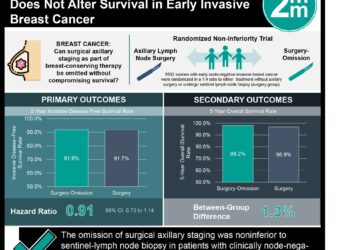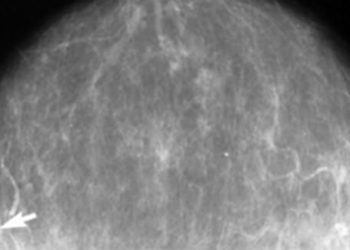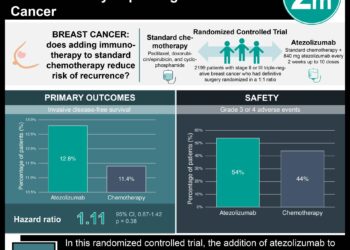No association between bra wearing and breast cancer
1. There was no association identified between bra use and invasive ductal or lobular carcinoma in post-menopausal women.
2. Baseline breast cancer risk did not differ by bra cup size, use of underwire bra, average hours per day of use, or age at first regular use.
Evidence Rating Level: 3 (Average)
Study Rundown: The use of bras for breast support is nearly ubiquitous in the United States. For most women, wearing bras decreases strain on Cooper’s suspensory ligaments and reduces back pain. Breast support also reduces the risk of fat necrosis associated with vigorous physical activity and decreases bothersome pain symptoms in lactating women and those with lactation complications, such as mastitis and breast abscesses. For years, unsubstantiated claims in the lay media purport bra use as a possible risk factor for breast cancer. The arguments include the sweeping assumption that higher rates of breast cancer in developed countries may be associated with more common bra use, invoking biological plausibility whereby constraining breast tissue may impair lymphatic drainage, and with it the removal of waste and toxins from the breast. Despite these reports, no studies demonstrate a significant association between breast cancer and bra use and few well-designed studies on the topic exist. In the present study, researchers addressed this concern using a population-based case-control study to evaluate the relationship between various aspects of bra wearing and breast cancer risk in postmenopausal women.
Researchers found no association between risk of either invasive ductal carcinoma or invasive lobular carcinoma, two of the most common types of breast cancer, and any aspect of bra wearing, including cup size, use of underwire, age at first bra use, and average number of hours per day worn. Strengths of this study include its unique study question, inclusion of various bra-wearing habits, and population-based cohort. Limitations include the self-reported nature of data collected, which is subject to recall bias, particularly with regards to historical data such as age at initiation of bra use. Additionally, all women in the study population wore bras. A prospective cohort study that specifically recruited women who do not wear bras as a control group would allow for better characterization of this association.
Click to read the study in Cancer Epidemiology, Biomarkers & Prevention
Relevant Reading: Breast size, handedness and breast cancer risk
In-Depth [case-control study]: Researchers used data from a population-based study involving postmenopausal women in one U.S. metropolitan area with one of two of the most common forms of breast cancer, invasive ductal carcinoma (n=454) and invasive lobular carcinoma (n=590), and compared them to a randomly selected control group of postmenopausal women from the same population (n=469). In-person interviews were conducted to collect information on breast cancer risk factors and bra-wearing habits, including cup size, use of underwire, recency of use, average hours per day worn, and age at first regular use.
No aspect of bra wearing was associated with an increased risk of either invasive ductal or lobular carcinoma. Compared with controls, postmenopausal women with breast cancer were more likely to be thin (BMI <25 kg/m2), nulliparous, use post-menopausal hormone replacement therapy, have experienced natural menopause and have a positive family history (i.e., at least one first-degree relative with breast cancer).
Image: PD
More from this author: Contained morcellation for benign gynecologic surgeries feasible, minimize surgical risk, Oocyte vitrification not associated with adverse obstetric or perinatal outcomes, IUD contraception equally safe in teenagers as in older women, No-cost contraception reduces unintended pregnancy rates, 20% lifetime risk of pelvic floor surgery in women
©2012-2014 2minutemedicine.com. All rights reserved. No works may be reproduced without expressed written consent from 2minutemedicine.com. Disclaimer: We present factual information directly from peer reviewed medical journals. No post should be construed as medical advice and is not intended as such by the authors, editors, staff or by 2minutemedicine.com. PLEASE SEE A HEALTHCARE PROVIDER IN YOUR AREA IF YOU SEEK MEDICAL ADVICE OF ANY SORT.






